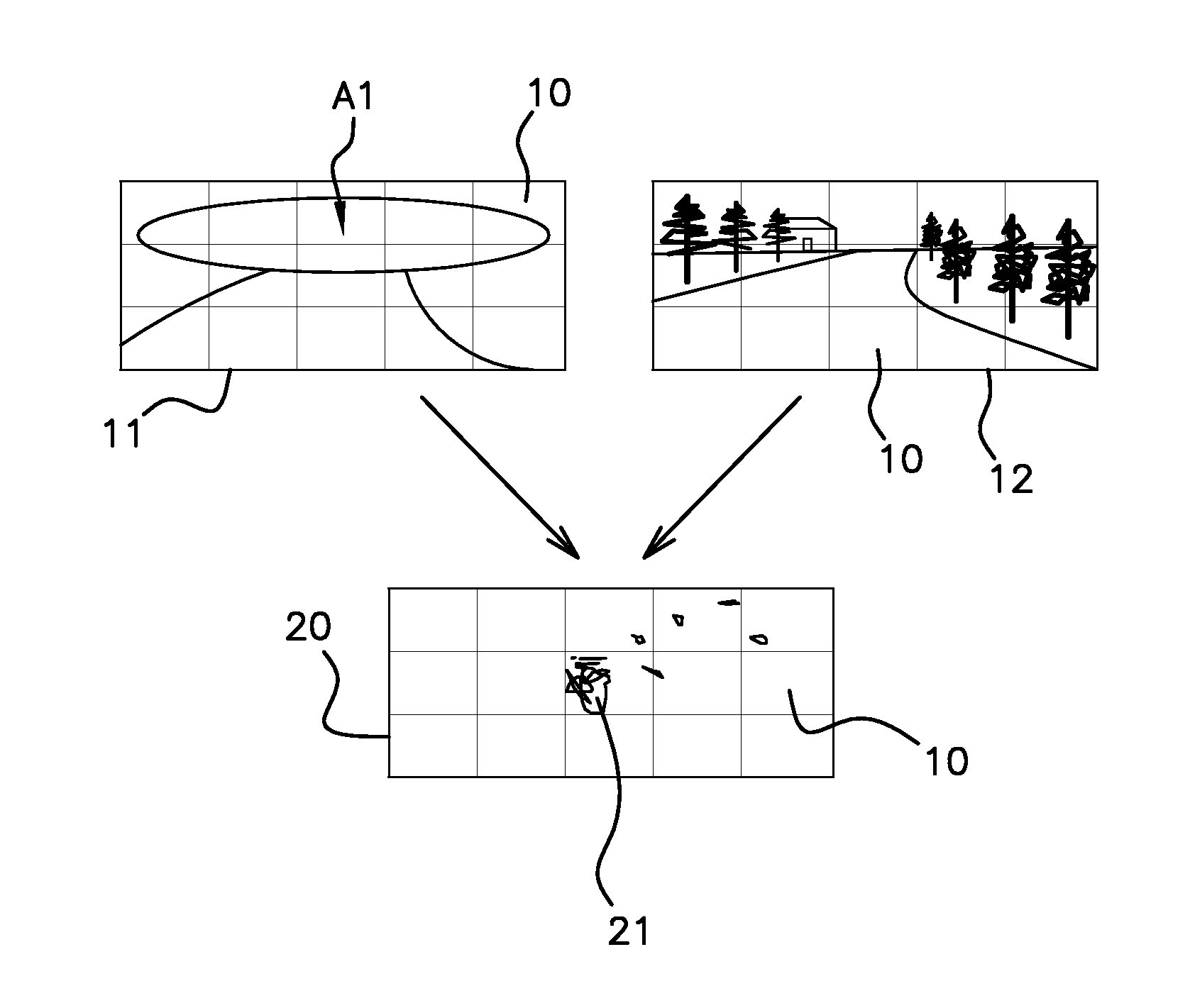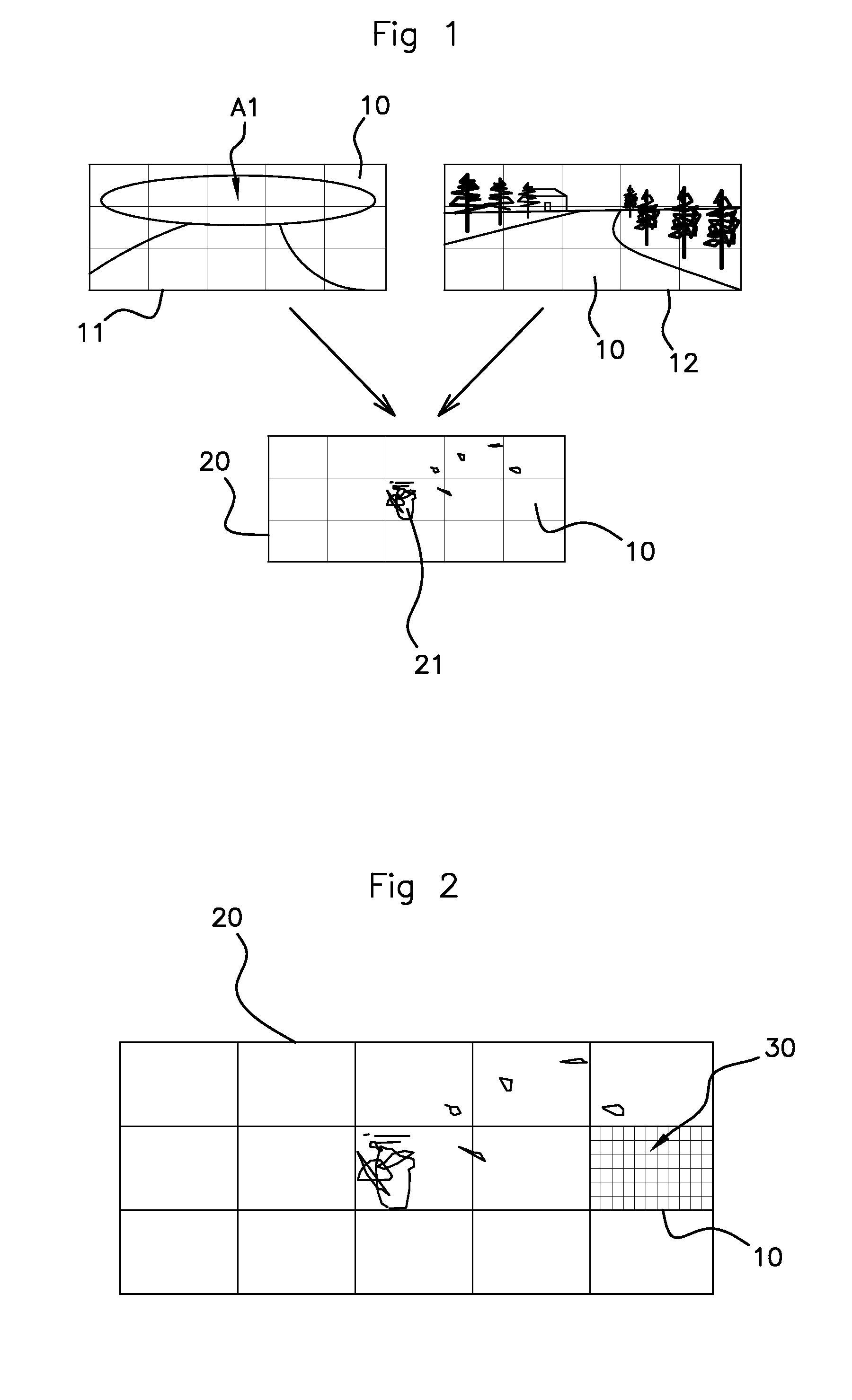Method for determining a state of obstruction of at least one camera installed in a stereoscopic system
a stereoscopic system and state of obstruction technology, applied in image analysis, image enhancement, instruments, etc., can solve the problems of low accuracy of local methods, high error rate of local methods, and limited performance of camera obstruction detection according to this method, so as to improve the performance characteristics of determination, low error rate, and high density
- Summary
- Abstract
- Description
- Claims
- Application Information
AI Technical Summary
Benefits of technology
Problems solved by technology
Method used
Image
Examples
Embodiment Construction
[0050]FIG. 1 illustrates one example of left 11 and right 12 images received on the cameras of a stereoscopic display system on board an automobile vehicle. The disparity map 20 generated by a digital processing system (not shown) from these images 11 and 12 is also shown. The images 11, 12 are divided up into 5×3 regular sectors 10 and the disparity map 20 is accordingly divided into 5×3 sectors. Alternatively, it is possible directly divide up the disparity map into sectors.
[0051]The right image 12 is complete, whereas it would appear that the left image 11 does not reproduce at least the upper region of interest A1 seen on the right image 12. The field of view of the left camera corresponding to the image 11 is thus partially obscured over this upper region A1 which covers the five upper sectors.
[0052]The disparity map 20 is determined by transfer of the disparities by sector 10 based on the pixels of one of the images serving as a reference, here the left-hand image 11. Each dis...
PUM
 Login to View More
Login to View More Abstract
Description
Claims
Application Information
 Login to View More
Login to View More - R&D
- Intellectual Property
- Life Sciences
- Materials
- Tech Scout
- Unparalleled Data Quality
- Higher Quality Content
- 60% Fewer Hallucinations
Browse by: Latest US Patents, China's latest patents, Technical Efficacy Thesaurus, Application Domain, Technology Topic, Popular Technical Reports.
© 2025 PatSnap. All rights reserved.Legal|Privacy policy|Modern Slavery Act Transparency Statement|Sitemap|About US| Contact US: help@patsnap.com



